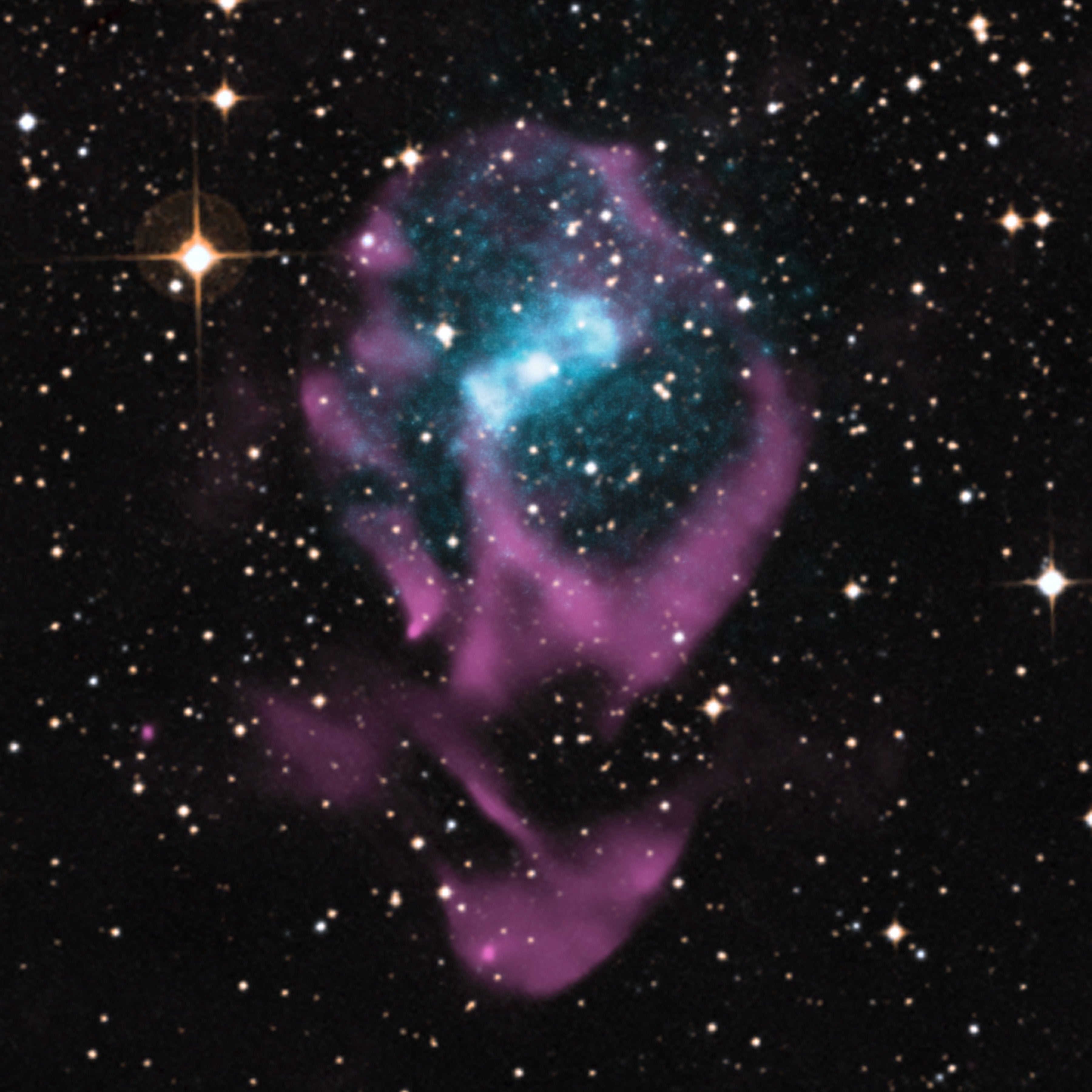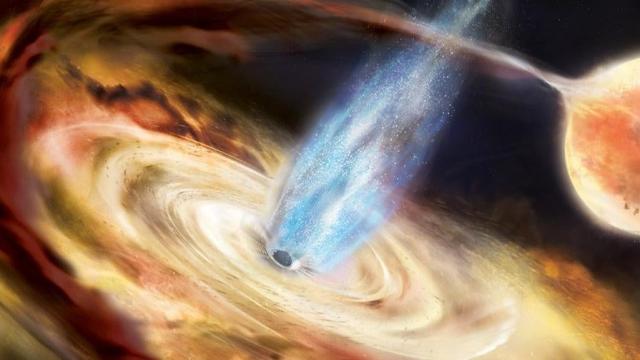Using a new tool they nicknamed the “Reverberation Machine,” researchers have detected eight echoing black hole binaries in the Milky Way. They then converted those X-ray echoes into sound waves, which you can listen to in the video below.
The Reverberation Machine combed satellite data from NICER, a telescope aboard the International Space Station that studies X-ray emissions from sources like black holes and neutron stars, including a weird type of emission known as an ‘echo.’ In a recent study published in The Astrophysical Journal, a team of astrophysicists describe eight new black hole binary echoes and their X-ray outbursts.
Black holes are famously massive objects with such intense gravitational pulls that not even light can escape them. Black holes are often surrounded by accumulations of superheated gas and dust, called accretion disks. When some of that superheated matter falls into a black hole, X-rays are produced.
In black hole X-ray binaries, the hole orbits and feeds off of a large companion star, like a flea on a dog, making the immediate vicinity glow with X-rays. Thanks to these accretion disks, researchers are able to observe otherwise-invisible black holes.
“The role of black holes in galaxy evolution is an outstanding question in modern astrophysics,” said Erin Kara, an astrophysicist at MIT and a co-author of the study, in an institute release. “Interestingly, these black hole binaries appear to be ‘mini’ supermassive black holes, and so by understanding the outbursts in these small, nearby systems, we can understand how similar outbursts in supermassive black holes affect the galaxies in which they reside.”

The researchers found that the black holes ranged in mass from five to 15 times the mass of the Sun, and all were feeding on Sun-like stars. The team reported that the black holes first had a large outburst of X-rays that lasted for several weeks, during which time the black holes generated luminous coronas and spewed huge jets of material moving at nearly the speed of light. Then, over the course of a few days, the coronas faded and the jets sputtered out as the black holes settled into lower energy states.
Some of those X-rays reflect off the accretion disks, creating ‘echoes’ of the initial emission. Last year, astrophysicists detected light echoing off the far side of a black hole for the first time, though that black hole was in a distant galaxy, and the eight newly discovered echoes are all in the Milky Way.
“We’re at the beginnings of being able to use these light echoes to reconstruct the environments closest to the black hole,” Kara said. “Now we’ve shown these echoes are commonly observed, and we’re able to probe connections between a black hole’s disk, jet, and corona in a new way.”
In a related project, Kara collaborated with education and music scholars to convert black hole X-ray emissions into sound waves. The lower frequency light corresponds to lower pitches in the audio. You can hear how the X-ray emissions crescendo before fading as the black holes’ outbursts subside. Now we just need someone to mix a sick black hole club beat.
More: New Video Puts Iconic Image of Black Hole in a Cosmic Context
